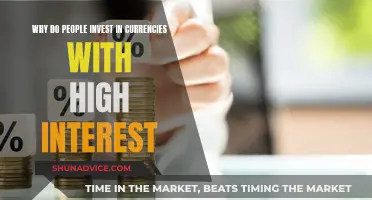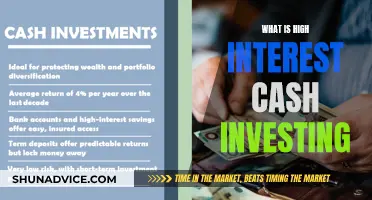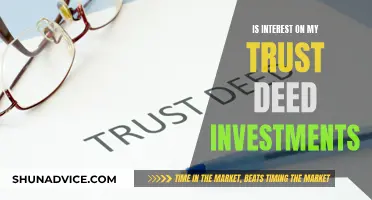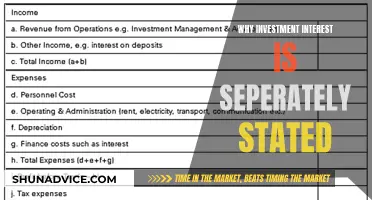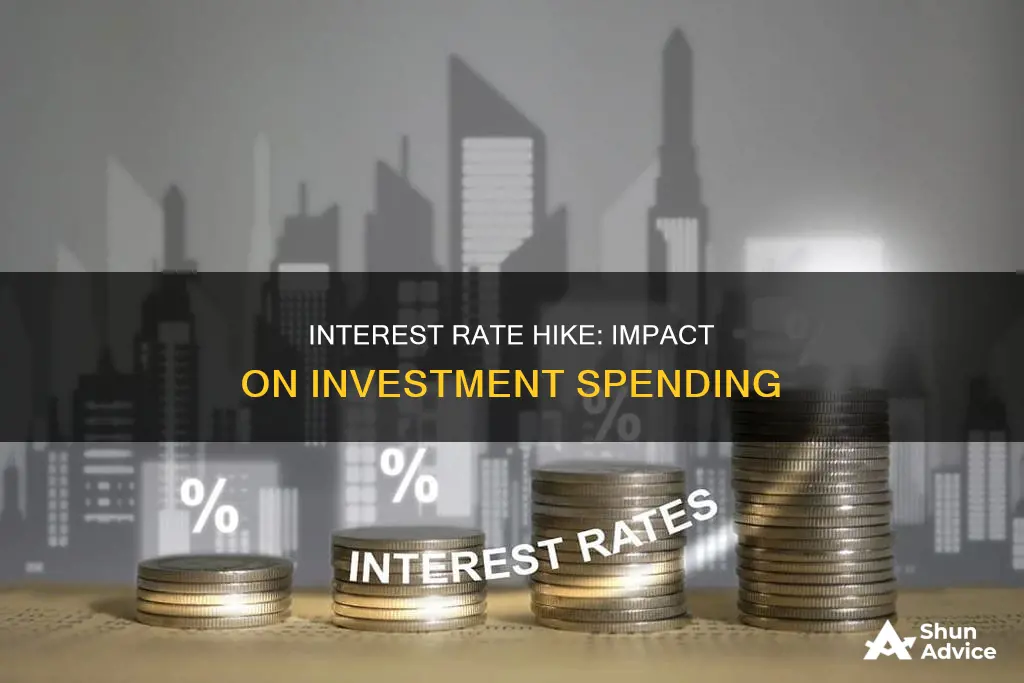
When interest rates rise, investment spending can be affected in a number of ways. Higher interest rates can curb consumer spending and stall business growth, which in turn can reduce the demand for investment. However, investment spending can increase even when interest rates rise if there are changes in other factors that shift the investment demand curve to the right.
| Characteristics | Values |
|---|---|
| Investment spending | Can decrease |
| Other factors | Can influence investment demand and cause it to increase even when interest rates are rising |
What You'll Learn

The inverse relationship between investment and real interest rate
Investment spending and real interest rates have an inverse relationship. This means that when one goes up, the other goes down. In this case, a rise in real interest rates will cause a fall in investment spending. This is because higher real interest rates mean a higher cost of investment, which reduces the demand for investment. For example, if the interest rate increases from 2% to 4%, the investment demand decreases from $200,000 to $100,000.
However, it is important to note that this relationship is not always straightforward. Other factors can influence investment demand and shift the investment demand curve. For instance, if other factors shift the investment demand curve to the right, investment spending can increase even when the real interest rate increases.
Additionally, the impact of rising interest rates on the economy is complex and far-reaching. It can curb consumer spending, stall business growth, influence the value of a country's currency, and impact the performance of financial markets. Central banks, such as the Bank of England, typically raise interest rates when inflation gets too high, making borrowing more expensive for commercial banks, which then pass on these costs to consumers and businesses.
Furthermore, macroeconomic models predict that government spending can cause nominal interest rates to rise, potentially crowding out investment and lowering future economic output. This is because government spending leads to excess demand for resources, and interest rates must rise to induce households and firms to delay consumption or investment. However, empirical evidence does not always support this strong theoretical prediction.
Interest Rates: Impact on Consumption, Investment, and Exports
You may want to see also

How rising interest rates can crowd out investment
When interest rates rise, the cost of investing increases. This can reduce the demand for investment, as the higher interest rates make it more expensive for commercial banks to borrow money, which they then pass on to consumers and businesses.
However, it is possible for investment spending to increase even when interest rates rise. This can happen if other factors shift the investment demand curve to the right. For example, if there are investment projects with a high expected rate of return, this can encourage investment even when interest rates are high.
The relationship between interest rates and investment spending is complex and can be influenced by a variety of factors. For instance, government spending can cause interest rates to rise, potentially crowding out investment. This is because government spending can lead to excess demand for resources, and interest rates must rise to induce households and firms to delay consumption or investment.
Overall, while rising interest rates can make investment more expensive and reduce demand, other factors can also come into play to encourage investment even in the face of higher interest rates.
Maximizing Investment Interest Expense Deductions: A Comprehensive Guide
You may want to see also

How rising interest rates can stall business growth
Rising interest rates can stall business growth in a number of ways. Firstly, higher interest rates make borrowing money more expensive for businesses. This can reduce the demand for investment, as the cost of investing increases. For example, if the interest rate increases from 2% to 4%, the investment demand decreases from $200,000 to $100,000. This can also lead to a decrease in consumer spending, which can further stall business growth.
Additionally, rising interest rates can crowd out investment. When government spending causes nominal interest rates to rise, households may delay consumption, and firms may delay investment. This can result in lower future economic output.
However, it is important to note that investment spending can still increase even when interest rates rise if there are changes in other factors. For example, if there are investment projects with high expected rates of return, the demand for investment may remain strong despite higher interest rates.
Overall, while rising interest rates can stall business growth by increasing borrowing costs and reducing investment demand, other factors can also influence the impact on investment spending.
Strategies for Locating Initial Compound Interest Investments
You may want to see also

How rising interest rates can curb consumer spending
Rising interest rates can curb consumer spending in a number of ways. Firstly, higher interest rates make it more expensive for commercial banks to borrow money from central banks. Commercial banks then pass this cost on to consumers and businesses, making borrowing more expensive for them too. This can reduce the demand for investment, as the higher cost of investment means that fewer people can afford to invest.
For example, if the interest rate increases from 2% to 4%, the investment demand decreases from $200,000 to $100,000. This is because the real interest rate is the cost of investing; a higher real interest rate means a higher cost of investment, which reduces the demand for investment.
However, it is important to note that investment spending can increase even when the real interest rate increases if other factors shift the investment demand curve to the right. These other factors include changes in the expected rate of return for investment projects.
Keynesian Theory: Interest Rates and Investment Insights
You may want to see also

How rising interest rates can affect the value of a country's currency
Rising interest rates can affect the value of a country's currency in several ways. Firstly, they can curb consumer spending, which can lead to a decrease in demand for the country's goods and services, impacting the country's trade balance and, consequently, the value of its currency. Secondly, higher interest rates can stall business growth by making it more expensive for businesses to borrow money, reducing their ability to invest and expand, which can also influence the value of the currency.
Additionally, rising interest rates can have a direct impact on investment spending. Typically, an increase in interest rates leads to a decrease in investment demand as the cost of investing becomes higher. However, if other factors shift the investment demand curve to the right, investment spending can increase even when interest rates rise. These factors may include changes in expected rates of return for investment projects, which can influence the overall demand for investment.
The relationship between interest rates and investment spending can be complex, and empirical evidence does not always support the theoretical predictions. For example, government spending can lead to excess demand for resources, causing interest rates to rise. However, studies have shown that government spending shocks do not always result in higher interest rates.
Overall, rising interest rates can have both direct and indirect effects on the value of a country's currency. While they can curb consumer spending and stall business growth, they can also impact investment spending, which is a crucial component of a country's economic performance and, by extension, the value of its currency.
Understanding the Magic of Compounding Interest in Investments
You may want to see also
Frequently asked questions
Investment spending can decrease when interest rates rise, as the cost of investing increases, reducing the demand for investment.
The real interest rate is the cost of investing. Higher real interest means a higher cost of investment, which reduces the demand for investment.
Yes, investment spending can increase when interest rates rise if there are changes in other factors that shift the investment demand curve to the right.
Other factors that can influence investment demand include the expected rate of return on investment projects and government spending.
Higher interest rates can curb consumer spending, stall business growth, determine the value of a country's currency, and impact the performance of financial markets.


